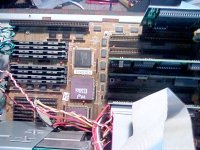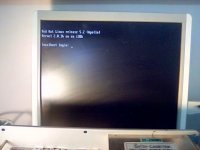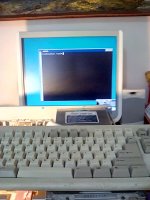MrImprovement
Experienced Member
- Joined
- Jan 7, 2023
- Messages
- 221
I don't believe it is really the case, in that essentially, aside from artwork, charts, etc. a person who is using a computer is doing a lot of "reading".It's not about resources, it's about convenience. GUI is the most natural interface for human being. By the way GUI was on purpose designed to replace old fashioned command line one, since GUI is the most convenient and the most natural way of interaction between man and machine.
So, you may use your old machine in many tasks, but it will be a painful and ineffective way of doing things. That's why vintage machines are perfectly suitable to serve as tinkering toys and museum items.
And 80x24 or 80x25 is almost exactly the number of characters on a page in a book (books have typically 1500 to 1800 characters per page).
Further, a moment's thought will show you that the density of even constraining typed commands to say 5 characters maximum, will give you a very large number of commands, far more than can be easily or quickly navigated and chosen via GUI. In my /usr/local/bin on the desktop FreeBSD system I am using, there are 1900 commands in just that directory alone - how would you quickly choose/navigate through even 400 commands via mouse, even on a 4k screen?
For concrete things, like CAD, pie charts etc. GUI may well be the way to go, no doubt; but there are plenty of tasks such as data entry, programming, working with text, processing data (awk, perl) etc. that the command line interface or "TUI" aka text user interface shines.
And muscle memory in terms of keyboard commands means that all 8 fingers (thumbs usually used for just the space bar) can type/select far quicker than the mouse.
One of my co-workers has been using only "vi" for 15 years - you should see him zip through a Perl file








